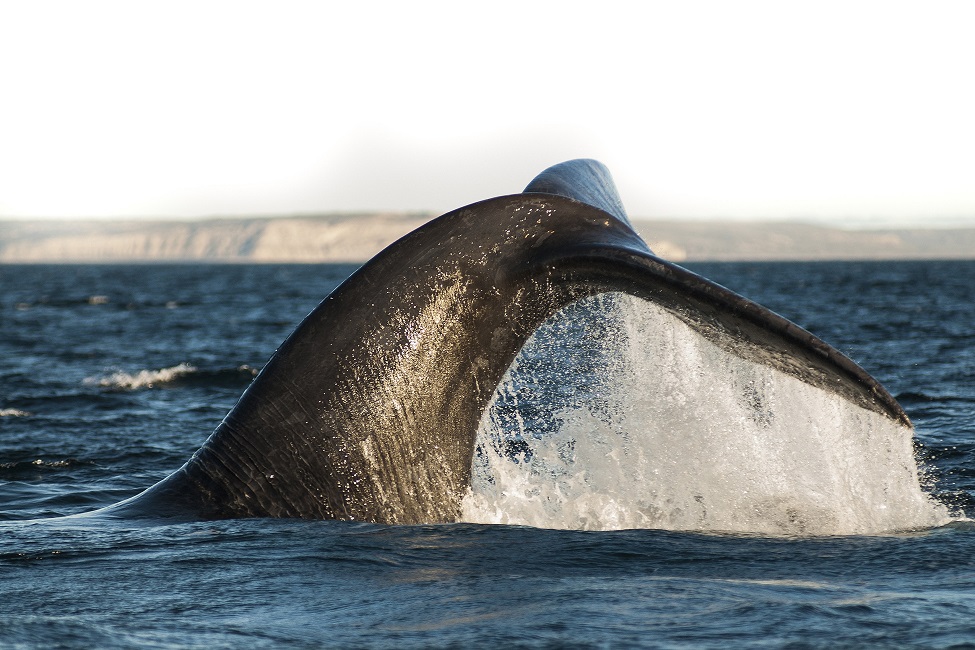‘Whoop’ – New Autonomous Method Precisely Detects Whale Vocalizations

The endangered North Atlantic Right Whale communicate with each other using an “up-call,” which is a short chirp or “whoop” that lasts about two seconds.
The North Atlantic Right Whale (Right whale) is one of the most endangered whale species in the world with only about 368 remaining off the east coast of North America. A decreasing trend and low reproduction rates, combined with high levels of human activities – such as shipping and fisheries – underscore their precarious situation. Efficient tracking of their numbers, migration paths and habitat use is vital to lowering the number of preventable injuries and deaths and promoting their recovery.
One of the frequently used methods to monitor whales is called passive acoustics technology. Right whales vocalize a variety of low-frequency sounds such as moans, groans, pulses and even belches. One typical vocalization they use to communicate with each other is referred to as an “up-call,” which is a short chirp or “whoop” that lasts about two seconds. Up-calls are narrowband vocalizations with frequency swings in the range of 50 to 440 Hertz and appear to function as signals that bring whales together.
Although current passive acoustics technology is a reliable, safe and effective way to monitor these endangered leviathans, it hasn’t always performed well. In the increasingly noisy ocean, current methods can mistake other sounds for whale calls. This high “false positive” rate hampers scientific research and hinders conservation efforts.
Researchers from Florida Atlantic University’s Harbor Branch Oceanographic Institute and the College of Engineering and Computer Science used artificial intelligence (AI) and machine learning methods to develop a new and much more accurate method of detecting Right whale up-calls. The technology utilizes Multimodal Deep Learning (MMDL) algorithms to evaluate acoustic recordings and make decisions on the presence of up-calls.
The study’s findings, published in the Journal of the Acoustical Society of America , showed that the MMDL detector outperformed conventional machine learning methods and demonstrated the superiority of the MMDL algorithm in terms of the up-call detection rate, non-up-call detection rate, and false alarm rate. The autonomy of the MMDL detector has immediate application for effectively monitoring and protecting Right whales where accurate call detection of a low-density species is critical.
“Our deep learning algorithm is a significant advancement on conventional machine learning methods. The near zero false-positive, false-negative and false alarm rates indicate that this new MMDL detector could be a powerful tool in the detection and monitoring of the low density, endangered North Atlantic Right Whale, especially in environments with high acoustic-masking,” said Laurent M. Chérubin, Ph.D., senior author and a research professor at FAU Harbor Branch who worked with Ali K. Ibrahim, first author and a post-doctoral research associate at FAU Harbor Branch. “Since the attributes of the MMDL system are not signal specific, we believe that it can be used as a classifier for all applications in which multiple classes are involved.”
Researchers verified the effectiveness of the MMDL model for Right whale up-call detection with Cornell University’s dataset. These recorded signals were converted to images and classified by the MMDL detector. The algorithm, composed of two types of neural networks, randomly selects its design parameters, requires little preprocessing and automates its architecture construction. Outputs from individual models are evaluated by a fusion classifier, which selects the most probable outcome.
To highlight the urgency for effective detection and monitoring technologies in endangered species, new research is indicating that whales and other marine species are being impacted by climate change, including shifts in migration patterns and habitat use. Recently, North Atlantic Right Whales have been observed in locations not previously known as important Right whale habitat. The new MMDL system offers a new tool to effectively monitor and assess the importance of these new behaviors in a changing ocean.
Study co-authors are Hanqi Zhuang, Ph.D., chair of the Department of Electrical Engineering and Computer Science, FAU College of Engineering and Computer Science; Nurgun Erdol, Ph.D., professor, Department of Electrical Engineering and Computer Science, FAU College of Engineering and Computer Science; and Gregory O’Corry-Crowe, Ph.D., lead of the Wildlife Evolution and Behavior program (WEB) and a research professor at FAU Harbor Branch.
This research was supported in part by the National Science Foundation (MRI Grant No. 1828181), which provided the scientists with the necessary computing equipment. Staff support was provided by the Protect Florida Whales Specialty License Plate provided through the Harbor Branch Oceanographic Institute Foundation.
-FAU-
Tags: research | harbor branch | engineering | technology | faculty and staff